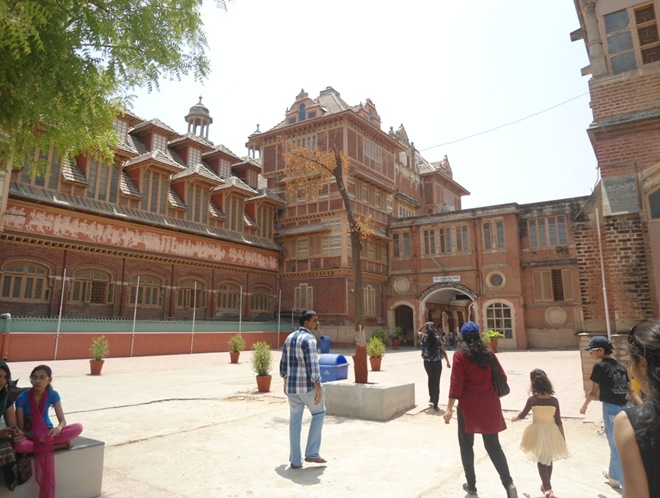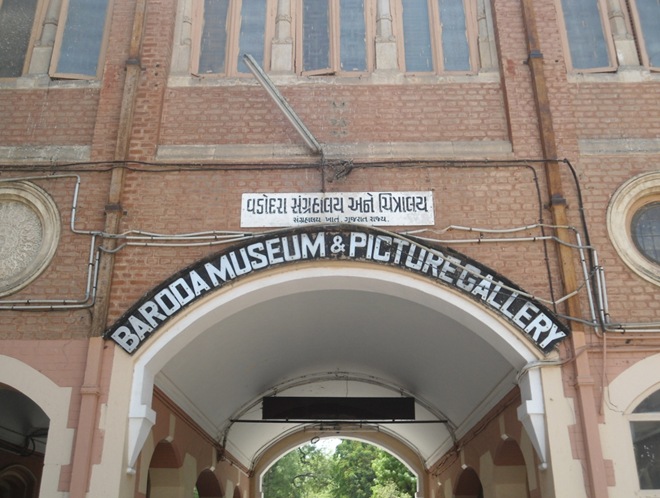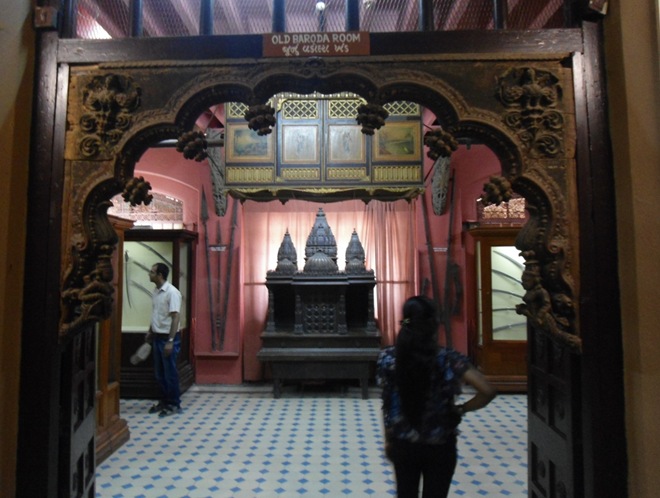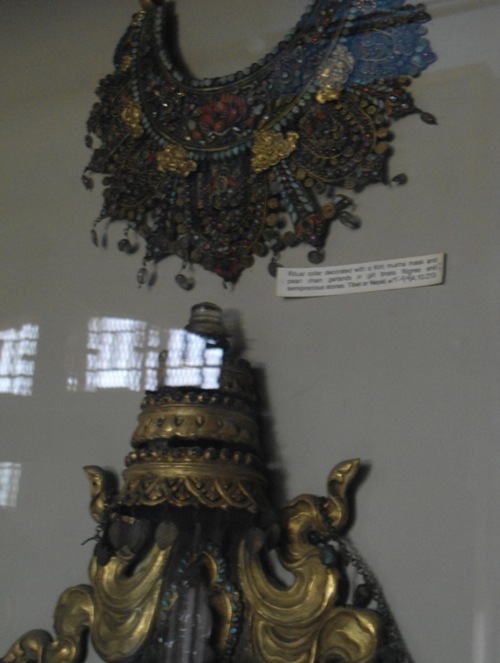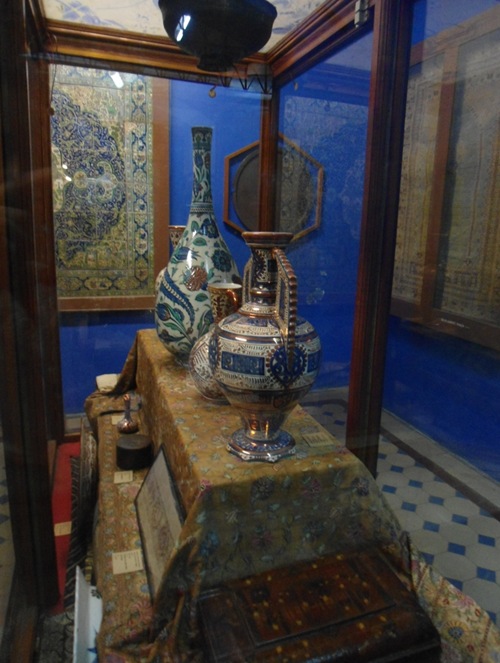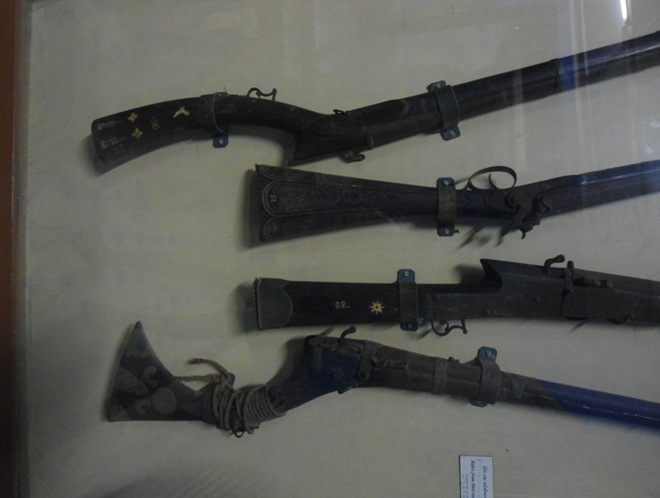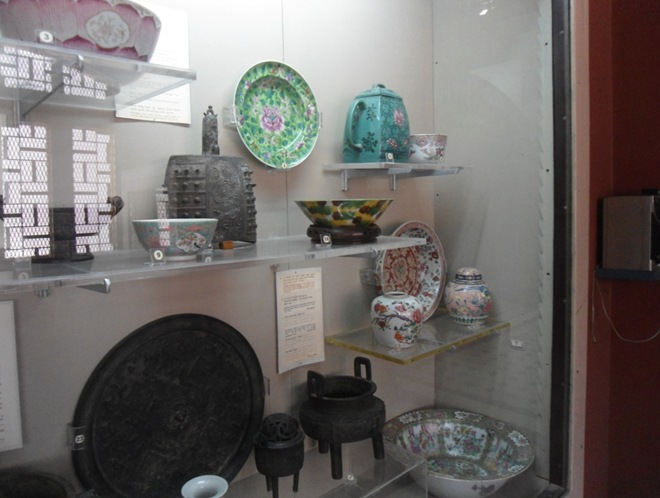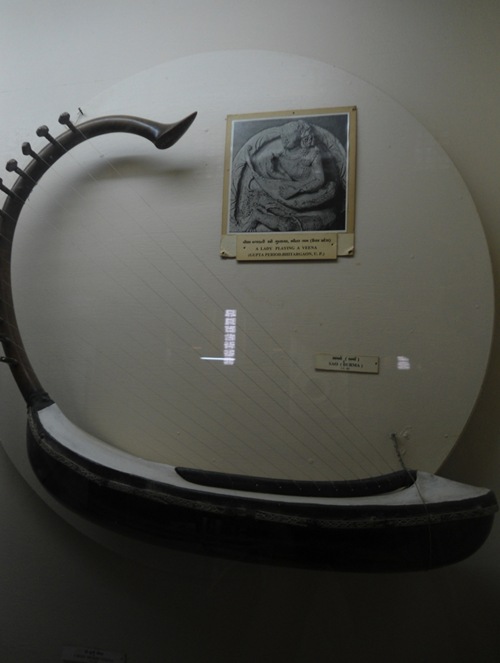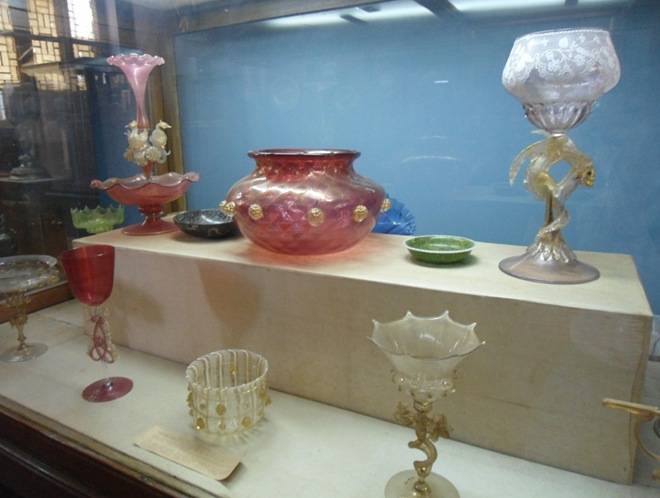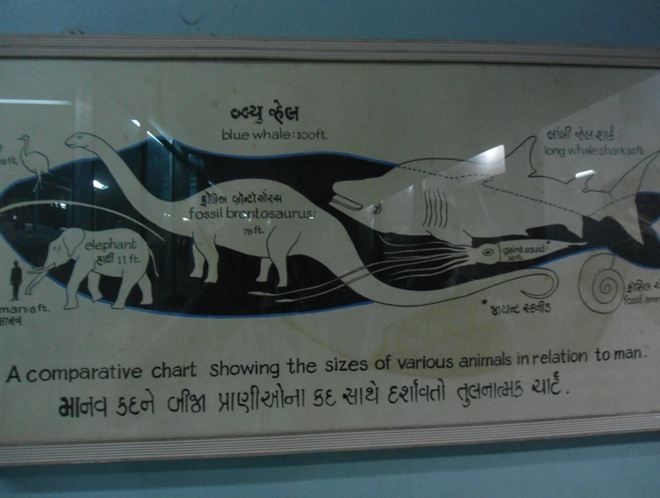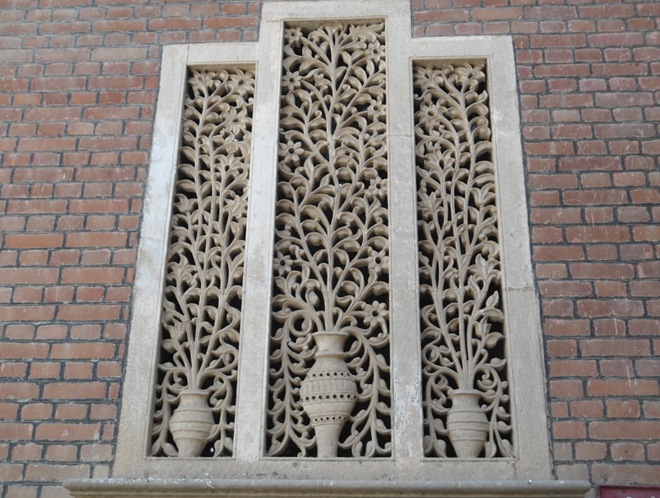The Baroda museum was founded by Maharaja Sayajirao Gaekwad III and built completely by 1894. This huge red brick structure reminds you of the architecture of England. The huge museum is located in Kamati Baug and has sprawling premises with the main building in the centre and gardens surrounding it. The museum is open on all days from 10:30 am till 5 pm. On a Sunday morning, typically the common man will come here on the obligatory Sunday outing with his wife and kids. Most of the crowd won’t halt in front of each exhibit for more than 3 seconds but for people who are really interested in history, information and art, Baroda Museum is worth a good 3 hours of their time.
The entry fee for Indians is Rs. 10 per person and Rs. 150 per person for foreigners. You have to pay Rs. 100 extra if you wish to use a camera inside.
I have visited the museum several times during my school days but did not remember anything about how the building looks like from inside or what all it contained except 2 exhibits – a huge animal skeleton and an Egyptian mummy. It turns out that these 2 exhibits are the highlights of the museum (and the caretakers / guards will not let you leave without confirming with you if you’ve seen them). 2 of my friends visited me last weekend and I dragged them to the museum because I wanted to refresh childhood memories.
Once through the entrance, you will find yourself in a huge lobby area with a passage, held up by wooden pillars and arches, going in the front towards the Gaekwad room. Just before it is a table showing old photographs and items once owned by Mahatma Gandhi. On the right and left sides are various other exhibits kept in individual rooms. The various rooms on the ground floor are Japanese Gallery, Persian Room, Baroda Room, Egyptian Room (housing the scary looking mummy with its feet popping out), Tibetian Room, Chinese Gallery to name a few. These rooms exhibit paintings, wall hangings, ceramics, and show pieces belonging to these various countries. There is also a huge room displaying cloth & handicrafts from various states of India. The Old Baroda room displaying the typical traditional Gujarati jaali work windows and balconies was one of my favourites.
The second floor consists of 2 wings. One half is primarily the Animal Section which has stuffed animals, birds and reptiles and preserved body parts (like intestines) of various animals. This one section was beyond my liking and I only managed to rush through it without paying attention to what ‘stood’ behind the glass walls glaring at me. Moreover the dummies looked dirty and wilting. The museum as such is well maintained and clean but the same cannot be said for the exhibits.
The other section is an assortment of minerals, stones, musical instruments, global tribal costumes and a huge elephant head skeleton. Another display I didn’t want to go close to (although a young boy of around 8 hopped inside the enclosure and tapped a couple of times on the tusk to fulfil his curiosity).
You go down the curved stairs and up towards the Picture Gallery which houses some famous paintings by Ravi Verma, European painters and Maharaja Sayajirao’s collections. In the basement below the picture gallery are the Greek and European rooms showcasing marble statues and pretty ceramics, glasswork and embroidery.
At last, just before the exit is the blue whale skeleton in the basement on the left side (the guards would willingly guide you). Apart from the 22 meters long skeleton, skeletons of dinosaur, chimpanzee, wild pig, etc are also displayed. This is one interesting room (actually a part of the kids’ section) which must not be missed.
Not just the exhibits, the architecture of the building itself is something that one can spend time looking at and photographing. As with all the buildings made during Maharaja Sayajirao’s times, this one is ornamental, grand and sturdy. The red brick form only adds to its mystique.
Someday I would like to come back here and spend a good half a day here taking photos and studying exhibits.
There is a tiny aquarium near the museum buildings which is too tiny and is nothing special. At an entry fee of Rs. 4, it may just be a delight for young kids. Oh yes, the funny distorted mirrors can keep the adults entertained.

